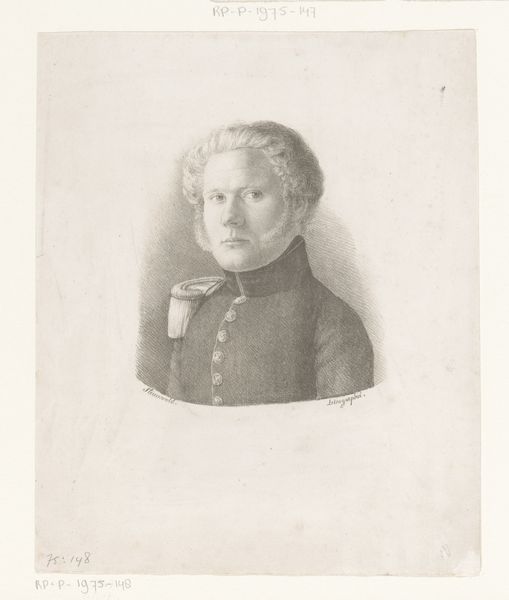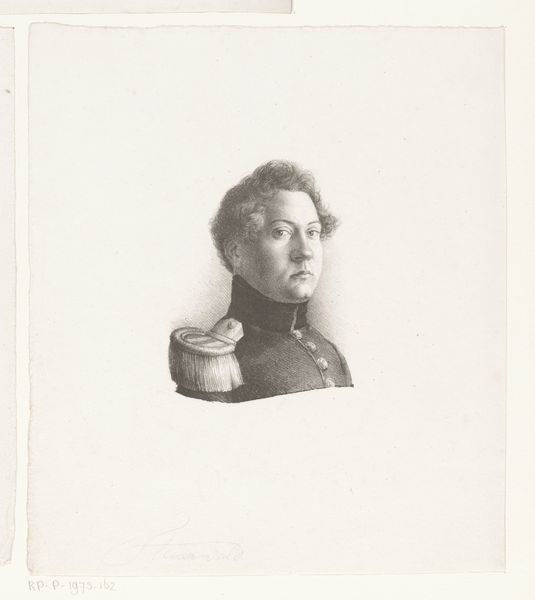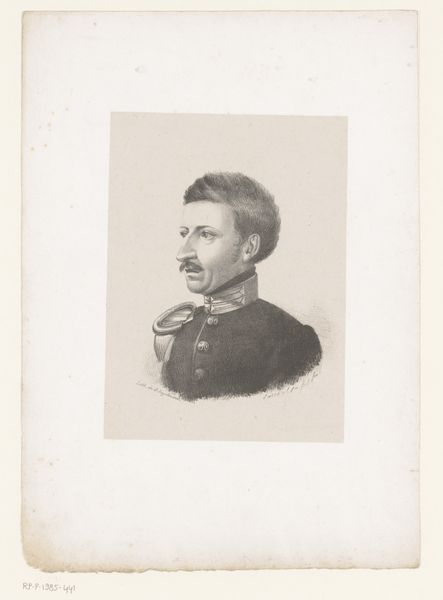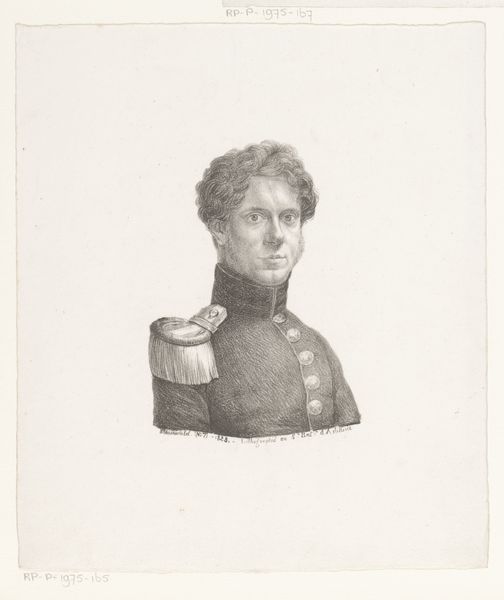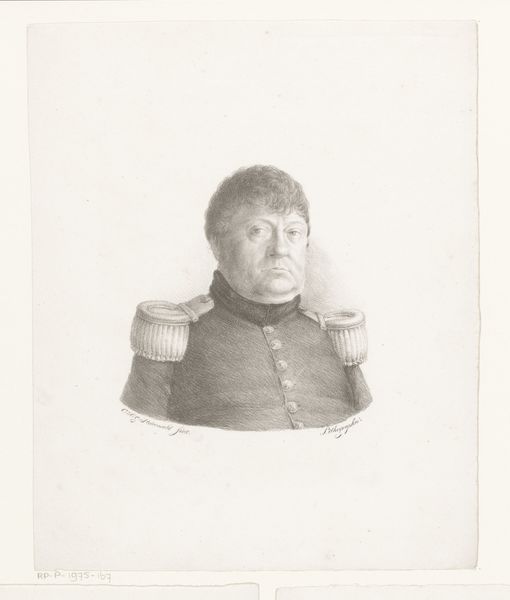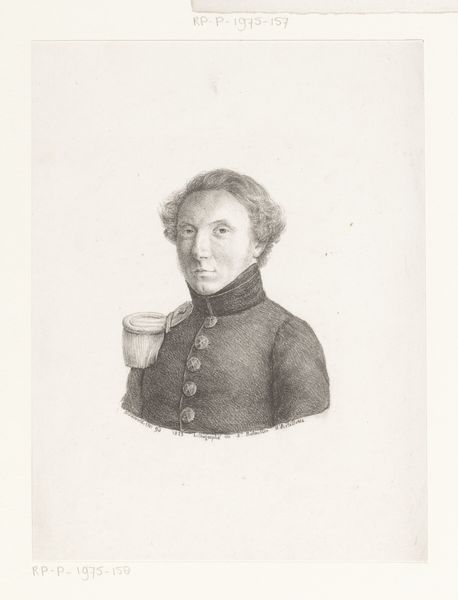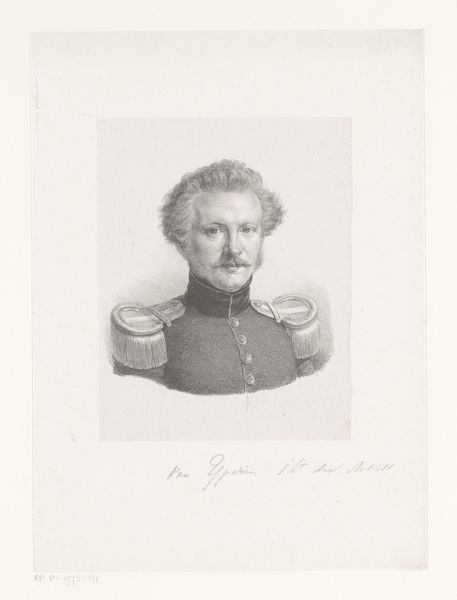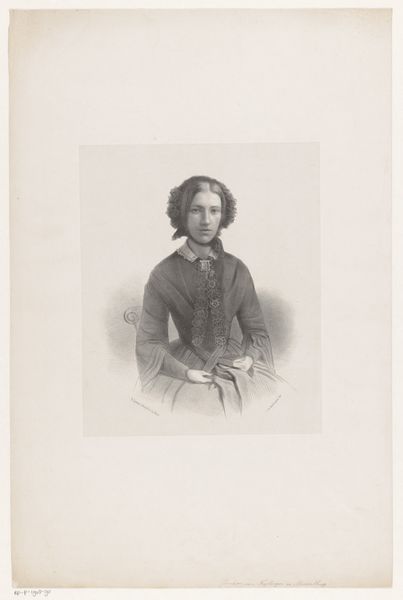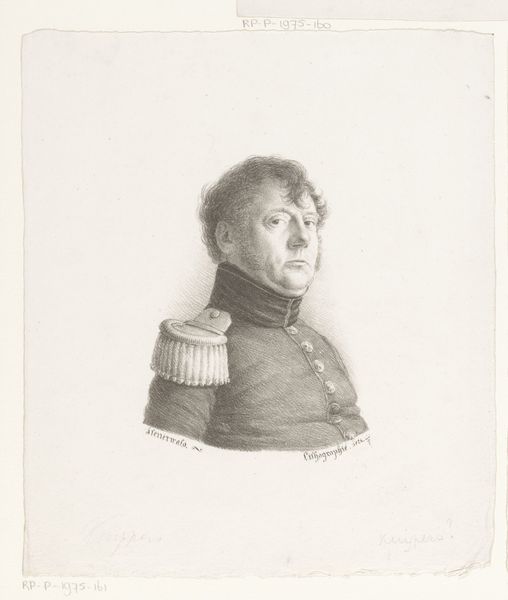
drawing, pencil
#
portrait
#
pencil drawn
#
drawing
#
pencil sketch
#
pencil drawing
#
romanticism
#
pencil
#
academic-art
#
realism
Dimensions: height 224 mm, width 188 mm
Copyright: Rijks Museum: Open Domain
Editor: This is "Portret van onbekende militair," or "Portrait of an Unknown Soldier," created sometime between 1822 and 1874 by Christian Heinrich Gottlieb Steuerwald. It’s a pencil drawing, and what strikes me most is how it manages to feel both formal and intimate. How do you read this piece? Curator: It's a fascinating example of how portraiture served specific social and political functions in the 19th century. Think about it – the rise of the middle class and burgeoning national identities created a huge demand for images of individuals, particularly those associated with power or status. Military portraits like this were crucial for constructing and disseminating ideals of patriotic service. Editor: So, it's not just a likeness; it's actively building a concept of what a soldier *should* be? Curator: Precisely. The academic style reinforces that sense of authority and order. The uniform isn't just clothing; it’s a symbol of state power. Consider where these images might have been displayed – in public spaces, homes, reinforcing civic values and loyalty to the nation-state. Editor: I see it differently now, not just a portrait but almost propaganda. The artist using realism to make something… unrealistic? Curator: Well, perhaps idealised rather than unrealistic. But it highlights an important tension: how do we reconcile the desire for a 'true' likeness with the social pressures to present a specific image? Who gets remembered and why? Those are critical questions. Editor: I learned that portraits can tell us not just who someone was, but how they wanted to be seen and how the government wanted them to be seen. Curator: Exactly. Art provides insight on who yielded and sought influence, and where social ideals stood. That's its true value.
Comments
No comments
Be the first to comment and join the conversation on the ultimate creative platform.
